Putty and plaster: what is the difference between them
Putty and plaster are not much different, but it is extremely important when finishing. After all, putty has a smaller fraction and it is much more suitable for painting.
Today we will understand in detail putty and plaster what is the difference. You can see the photo and instructions will be given on the rule of material selection.
The content of the article
The difference between plaster and putty
Putty, plaster, these are two different materials. In order to feel the difference between putty and stucco, you need to understand what these mixtures are and what they are intended for.
If you don’t want to dive into the question, you can trust an experienced master who is well acquainted with all the options for finishing.
What is the difference between putty and plaster:
- Stucco is a building mixture that levels the exterior and interior walls, as well as the ceilings.
- Putty is also a building mixture for leveling wall surfaces.
- The difference between these two building materials is that the curved walls or blockages in it are smoothed with plaster, and not essential defects are covered with putty, for example, cracks, joints between sheets of drywall (seePutty of drywall joints - how to do it), potholes and more.
- Putty from plaster is also different in that it almost does not shrink.
Attention: Plaster will cost you much cheaper due to the large mineral filler. It is also much stronger than putty. After all, everyone knows that for strength during concreting, crushed stone is added to the solution. So with plaster, the strength of which depends on a large filler. That is why this mixture is applied in a thick layer.
Plaster composition
Stucco putty the difference is also visible in composition. These are slightly different materials.
So:
- The plaster consists of a mixture of cement, sand and polymer additives, which contribute to the plasticity of the solution, good adhesion to the base (adhesion). Do not forget that when preparing a cement-sand mortar, you can or rather need to add glue (PVA).
- When gypsum with stabilizing additives is added, the batch will slowly coalesce and the composition will turn out to be very plastic.
- Much less often in repair work, mixtures of cement and lime, clay and lime, clay and gypsum, as well as clay and cement are used. They can be prepared both with their own hands and you can purchase these dry mixes in construction stores. But keep in mind that far from everywhere you can buy ready-made mixes, so it’s better to make them yourself.
The composition of the putty
| Cement putty |
|
| Gypsum putty | Which finish the walls and ceiling, it is used exclusively when working indoors, where moisture does not enter. From moisture, gypsum is very quickly destroyed. Such a mixture differs from plaster by finer grinding of gypsum. Gypsum does the work of both the filler and the binder. |
| Acrylic Putty | Used in construction work and mixtures based on acrylic (acrylic resins).In addition to acrylic resins, chalk (as a filler) and water are added to the solution. If you correctly apply the mixture, then the surface of the walls will resemble gloss. This putty can be used for internal and external construction work. |
In addition to the above types of putty, you can choose other, so to say “exotic” compounds:
- Exist oil putty, made from natural drying oil and adding other fillers.
- Glue consists not only of drying oil, but also glue (approximately 10% of the total composition). Epoxy plaster is made on the basis of epoxy resin. Latex in latex plaster has binding properties. It is also possible on the basis of glue (polyvinyl acetate) with a mineral filler.
Plaster or putty?
Everyone will easily deal with this issue. The use of these materials in the work proceeds from what they are.
It has already been stated above that walls, ceilings and rubble are aligned with plaster. If you need to fix some defects, such as cracks, scratches, potholes, seams, then you need to putty.
Attention: Putty or plaster, where it is necessary to put a layer over one cm, then plaster is applied. If less, then use a putty.
Now it is very clear that from the beginning, plastering is required for the wall, and only after that it must be putty, which prepares for painting and gluing the wallpaper.
How to apply mortar
Application methods for different building mixtures will be different. Therefore, this fact cannot be ignored.
Consider the most relevant types of mixtures:
| Cement plaster | This plaster has no adhesive properties, it is astringent, so you need to apply it with a trowel or a construction spoon.
|
| Gypsum | Gypsum putty or plaster, unlike cement, is not sprayed, but spread.
|
Recommendations
Stucco and putty walls not hard work. But it must be performed according to certain rules. Although the price is not large, it should be remembered that if you mix a lot, then you can simply not have time to apply it.
Therefore, do not do much. Especially if you have no practice. You can see everything in the video in this article.
But remember the following:
- One layer of plaster should not be more than 1 centimeter. The thickness of the entire coating of plaster is 5 cm. If the thickness of the plaster does not exceed 3 cm, then it can be applied without reinforcing. If more than indicated, then such a process is necessary (steel and fiberglass).
- Before puttying, priming is necessary for wall surfaces. Putty is also not characterized by such a strong adhesion to the base, as for plaster.
- Do not forget about the fact that before applying wallpaper or painting walls, a primer is also required. With its help, the surface is strengthened, porosity is reduced and adhesion of materials is improved.
Attention: From all of the above, we can conclude that plaster and putty have their own differences. These mixtures are prepared from different components and are intended for different purposes in construction work.
Putty decorative plaster is also made, it just has more dyes and therefore it is a less durable coating. You can find how to make decorative stucco with your own putty on the pages of our website, you only need to know that this material should not be used in places with high humidity and temperature drops, otherwise it starts to flake and fall off.
This plaster putty is also superimposed. In this way, you can even select individual parts of the common plane.
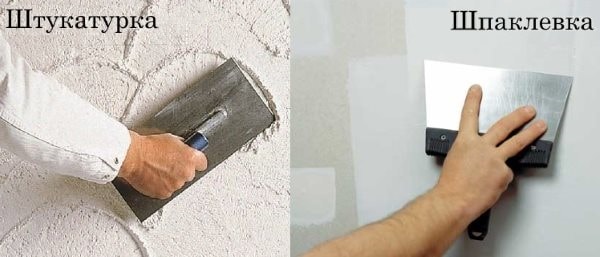

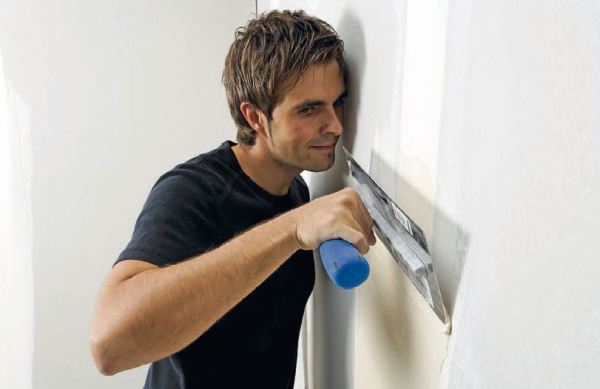


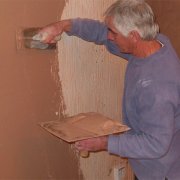
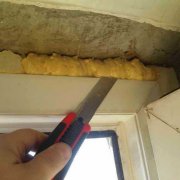

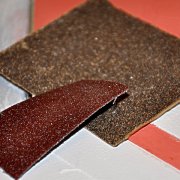
Cool, it really helped 😉